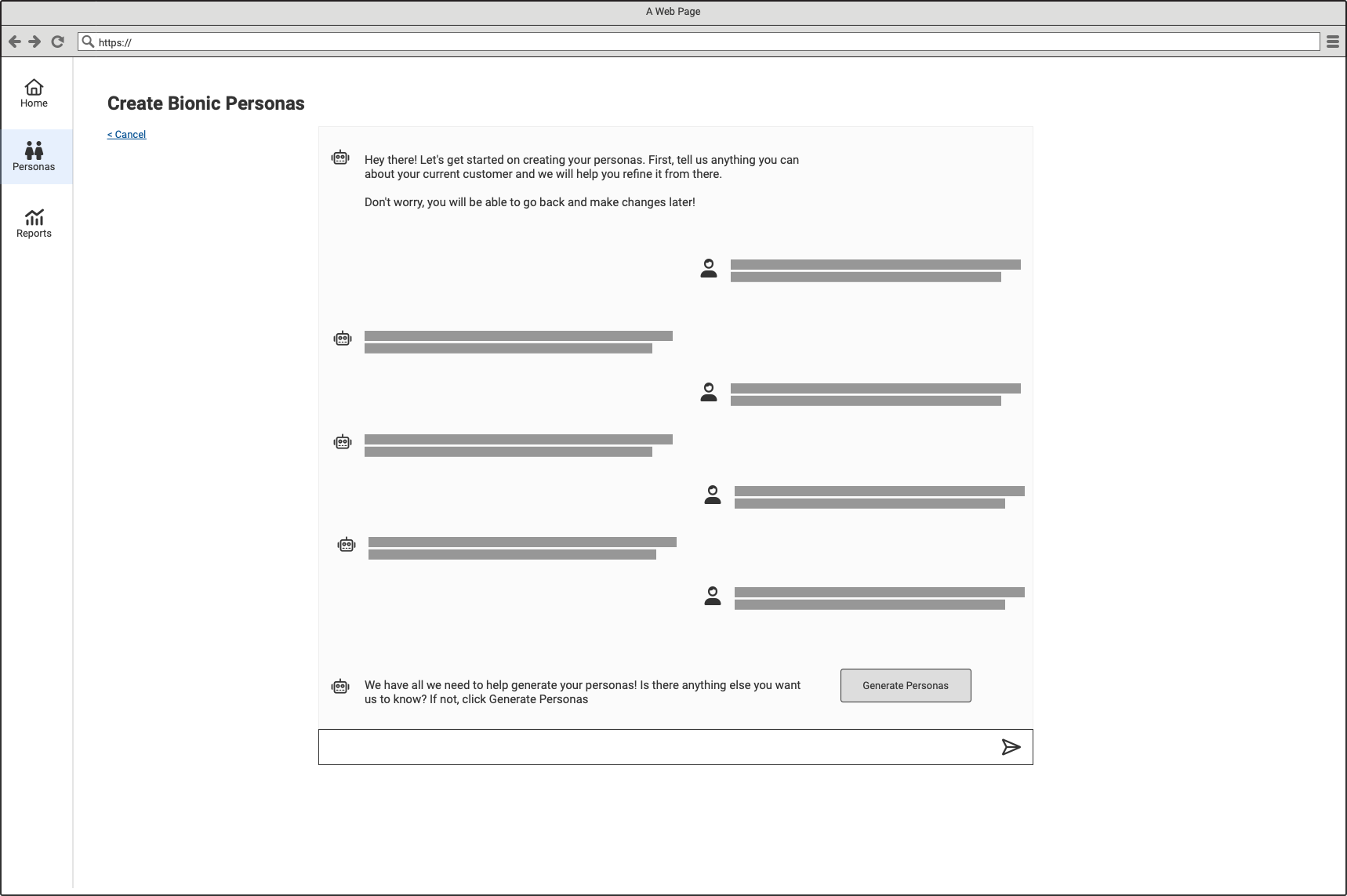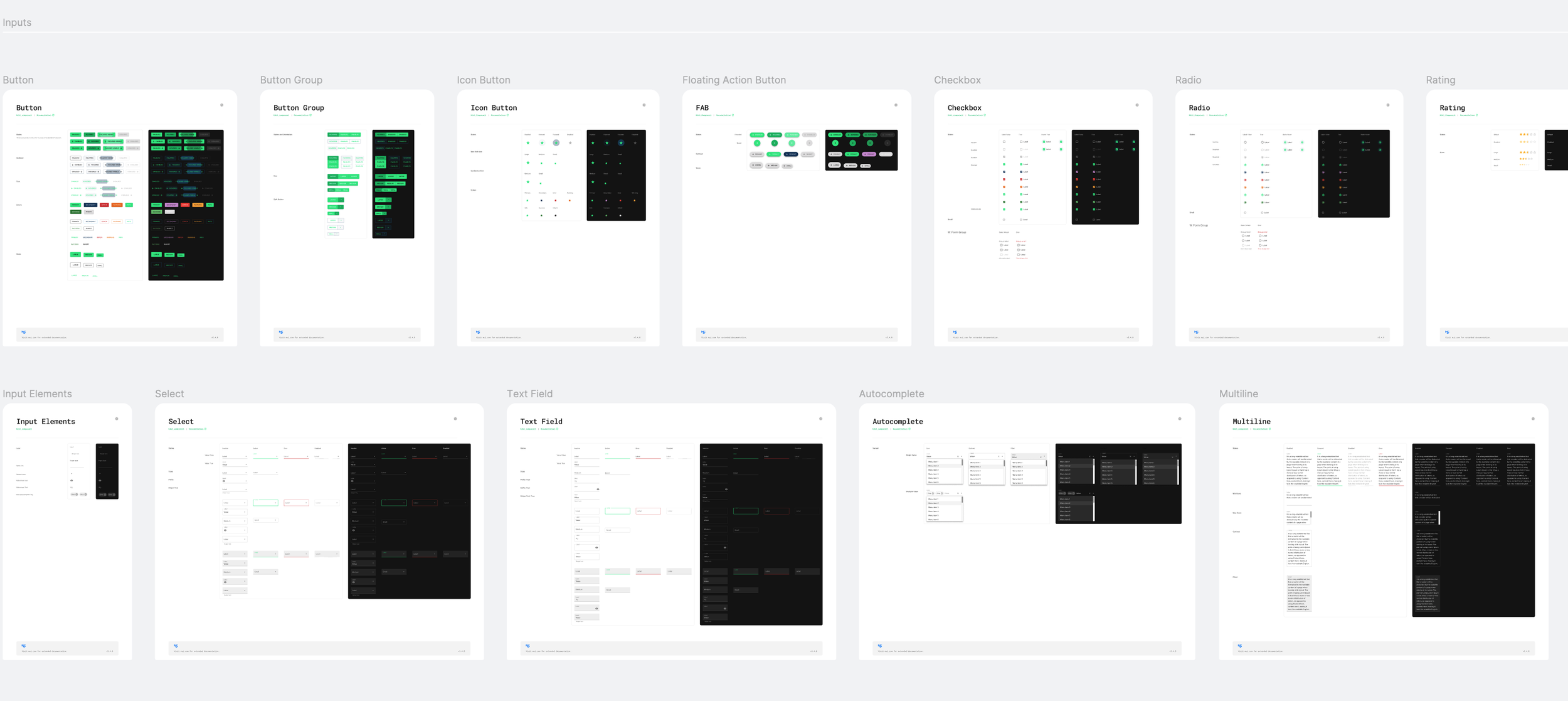AI Personas
Eliminating the challenges of time-consuming customer research with an AI-driven personas platform, designed to uncover key pain points and validate value propositions with ease.
My Role
UX Research, UX/UI Design, Visual Design
My Team
UX Researcher, Product Manager, Engineers, Prompt Engineers
About Mach49
My previous company, Mach49 is a venture building company that was rapidly scaling, and we needed a way to help solve these growing pains. Mach49 works with Fortune 1000 companies to bring teams of entrepreneurs together, conduct customer research and find product market fit. This is a very intense, 3 month incubation process that often leaves both Mach49ers and our client entrepreneurs (or venture builders) overwhelmed and exhausted.
The Problems to Solve
Recruiting the right customers to interview is time consuming.
Teams spend 50% of their time conducting outreach.
Customer Recruitment is a bottleneck
Limited time for synthesis and iteration
Outreach and interviewing allows little time for synthesis and deep thinking.

How can we leverage AI to enhance the venture-building process and identify the greatest opportunities to improve the overall client experience?
AI Tools for Experimentation
Our prompt engineers explores various AI-driven solutions.
Outreach Automation
Pain Point Report Generation
Miro Board Extension
AI Generated Script Builder
Value Proposition Ideation
Airtable Extension
Synthetic Personas
We determined most promising was synthetic personas
Replicating customer interviews = time savings
Design Process
Creating Personas - What didn’t work
Forms
Guidance vs Upload
Overly specific personas
Users struggled with filling out a form due to incomplete early details, requiring more flexibility and guidance. Overly specific AI-generated personas backfired, as users questioned their accuracy and suspected fabrication. These insights led to refining AI-supported persona creation by balancing structure with adaptability and ensuring transparency in how insights were generated.
Creating Personas - What did work
Real time preview
Threaded prompting
Double Sided Chat
Guiding users through persona creation was effective, with the real-time preview being the most engaging. Users liked seeing their personas built as they entered information, but technical limitations prevented real-time updates. Threaded prompting worked best, offering a structured yet flexible experience that guided users efficiently while allowing for edits before finalizing.
Fine tuning the Personas with Prompt Engineering
To evaluate how well our prompts generated personas, we built a prototype connected to our backend and I conducted real-time user tests. Since the chat experience wasn’t ready, we used a form to assess how effectively AI could interpret user input.
Key findings:
Repetitive outputs – AI often mirrored user input instead of providing new insights.
Lack of distinctiveness – Personas felt too similar.
Limited control – Users wanted more editing flexibility.
These insights helped refine our prompts, ensuring AI-generated personas were more distinct, meaningful, and customizable.
Making Personas Actionable
We tested how users wanted to engage with AI-generated personas—chatting one-on-one, generating pain point reports, or brainstorming solutions. Our goal was to identify the most impactful feature.
Chatting with personas was the most valuable, allowing users to dig deeper into insights beyond real interviews.
Generating pain point reports helped validate research and uncover missed insights.
Brainstorming value propositions supported ideation by sparking creative problem-solving.
These findings guided our focus on features that best complemented user research workflows.
Final Designs
Creating Personas
We implemented a threaded prompting interface to make persona creation intuitive and provide immediate feedback. Clear loading indicators showed how inputs transformed into traits, adding transparency. Users could edit personas at any stage, giving them more control and building trust in the tool.
One on One Chat
Users could chat directly within each persona segment, with private, saved conversations. Inspired by LinkedIn messaging, we kept chats in context, ensuring easy access without navigating away.
Pain Point Reports
Users primarily wanted a clear list of pain points with severity rather than excessive details. Based on this feedback, we moved forward with a simplified pain point report per segment, including a brief description and severity level. We planned to fine-tune the prompts over time to provide more accurate, detailed breakdowns as needed.
Value Proposition/Solution Generation with Synthetic Feedback
Users found synthetic feedback helpful for thinking outside the box, identifying issues early, and validating ideas. To support frequent iterations, we simplified the design, allowing users to quickly scan, collapse, and expand value propositions—ultimately named solutions—grouped by pain points, with easy access to details and feedback.
Design Handoff
Annotated Flows
Material UI Design System
Responsive Screens
Integrating Personas into Research
Teams were initially skeptical, but we emphasized that AI personas complemented—rather than replaced—traditional research.
The tool accelerated early insights, and feedback showed that its data often aligned with real interviews, helping teams make confident decisions faster.
Our goal was to reduce time spent on recruiting and interviewing, allowing for deeper thinking and strategic decision-making.
Feedback and Reflections
We ran brief usability tests to identify pain points, finding minor bugs but overall positive feedback with no major issues.
Collaboration
Users wanted to be able to share their personas and their one on one chats more easily with other team members.
Group Conversations
Users wanted to be able to interview all the personas in one segment at the same time, having a “group conversation”













